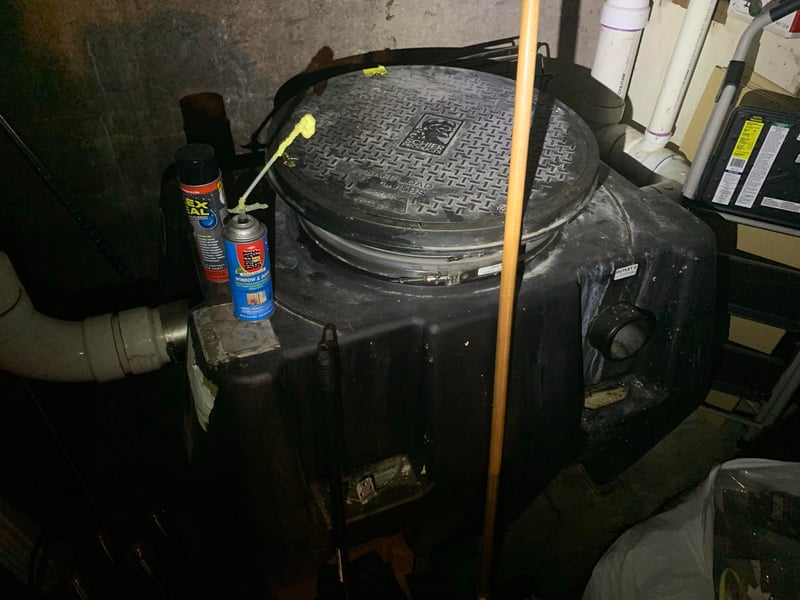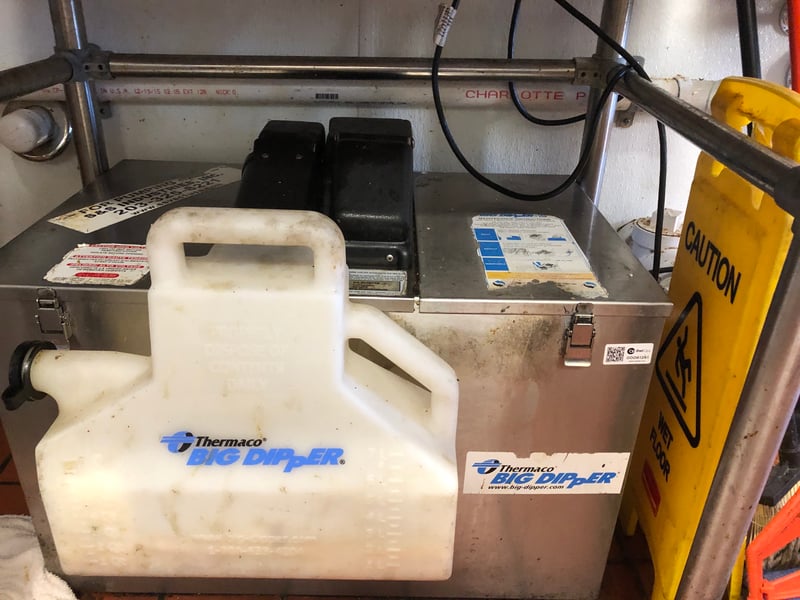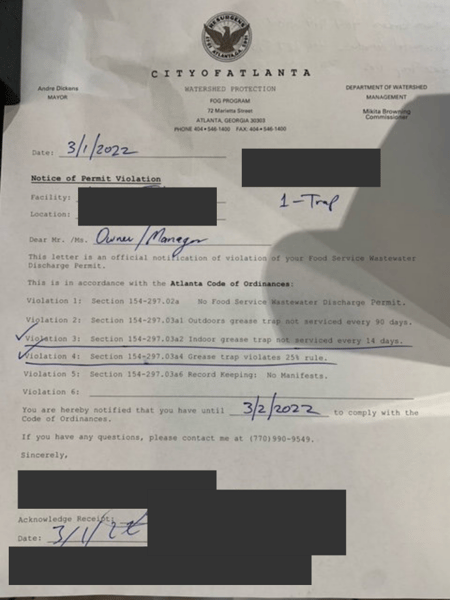Cypress Five Star, Inc. dba Five Guys and Blaze Pizza Announces Partnership with 86 Repairs
86 Repairs is partnering with Cypress Five Star, a fast casual franchise services leader in North America dba Five Guys and Blaze Pizza.
Without proper maintenance, restaurant grease traps can create prohibitively expensive repairs. Prevent unnecessary service in this 86 Repairs guide.
Welcome to the first 86 Repairs Guide! In this series, we provide valuable troubleshooting, preventative maintenance, and warranty information on the equipment and infrastructure found in your restaurant. We hope this information will help you and your team become more informed about repairs and maintenance (R&M)—and save you time and money along the way.
What’s large, easy to smell when not cleaned properly, and lurking in the depths of every restaurant? A grease trap!
Without proper cleaning and maintenance, restaurant grease traps can create prohibitively expensive repairs—or worse, they can require that you shut down operations entirely, resulting in thousands of dollars of lost sales.
Keep reading to learn how to prevent these issues with 86 Repairs’ best tips for maintaining restaurant grease traps.

A restaurant grease trap is a plumbing device installed within drainage systems to filter out oil solids and debris that can cause wastewater and sewage lines to become blocked.
Grease traps are non-negotiable for restaurants of all service types and volumes. Though the primary function of a grease trap is, well, to filter grease, they’re important even if your restaurant doesn’t have a fryer. This equipment helps prevent items of all kinds, like packaging, utensils, and food scraps, from getting stuck in pipes.
There are two types of grease traps:
Restaurants should choose between a grease trap and grease interceptor based on its size and anticipated volume. A cafe serving baked goods and coffee with limited hours and only 32 seats would be better served by a grease trap, whereas a steakhouse with two services per day and over 500 seats would likely need the capacity of a grease interceptor. Before choosing which type of device to install, check local health codes for any grease trap requirements.
In some places, like Arizona, grease traps are always referred to as grease interceptors. But for the sake of simplicity, we’ll use the term grease trap.
86 Repairs tracks all the data related to our customers’ equipment service history and vendor performance so they can access never-before-seen R&M data to make better repair and maintenance decisions —and correctly estimate and track spend.
Here’s what restaurant grease trap repair and maintenance looked like for our customers in 2021:
Frequent cleaning is vital to keep grease traps from overloading and continue working as they should. Restaurant grease traps should be cleaned at least quarterly, but it should be done more often for larger, higher-volume restaurants.
An investment in cleaning is a small price to pay versus emergency service:
Routine cleaning can be planned and completed when customers aren’t around, but grease trap emergencies can happen at any given moment—including a busy Saturday night. Save yourself from unexpected downtime by learning about grease trap preventative maintenance and how to troubleshoot common grease trap issues.

There are a few tactics your restaurant can use to stop grease trap smells and clogs before they happen.
Routine cleaning is an absolute must-have for any restaurant grease trap. It will help unsavory odors from spreading into the kitchen—or worse, into the front of house—and allow the plumbing to continue running as it should, eliminating any small clogs before they can build to a large backup.
At a minimum, grease traps should be cleaned quarterly. However, your restaurant will likely need to have cleaning done more often if the grease trap has a small volume, if the restaurant is large, and/or if the restaurant does a high volume of business.
Vendors typically take two approaches to cleaning restaurant grease traps:
The type of routine cleaning you choose is dependent on the type of restaurant you run. Think back to our cafe vs. steakhouse example: the cafe, with few seats and no fryer, likely just needs to be filtered. The steakhouse, with ample grease from cooking fatty meats and preparing fried sides, will want a full drain.
The pipes in your restaurant are relatively narrow. No matter how often you engage in routine cleaning, these will continuously get covered in grease. Over time, layers of grease accumulate, decreasing the diameter of the pipe—and therefore the volume of waste that can pass through per minute.
To help keep your restaurant grease trap running smoothly, we recommend line jetting. Jetting uses a 360-degree nozzle and high water pressure to clean the pipes, removing all of the layered grease.
We recommend investing in line jetting about once or twice per year, but this is a general estimate. Always stick with the recommendation of your preferred grease trap vendor to ensure the proper level of service for your restaurant’s specific needs.
At about $900 per visit, jetting might feel expensive for grease trap preventative maintenance. But it’s really a drop in the bucket compared to emergency grease trap service that can be three times as expensive—and requires the doors of your restaurant to close.
During service, anything from fabric napkins to large food chunks to metal cutlery can fall to the floor. When those floors are cleaned at the end of a shift, those items can accidentally get pushed into a floor drain, causing clogs.
Protect your grease trap from clogs by investing in floor drain grate covers. These come in a variety of sizes and depths to best fit the drains in your kitchen and are easily removable when routine cleaning or jetting is on the schedule.
Even if you’re adhering to your vendor’s suggested schedule for cleaning and jetting and things seem to be running smoothly, the actual structure of the grease trap might be in jeopardy. For example, the baffle—a piece of plastic or metal that controls water flow within the grease trap— will degrade over time. With a photo, your vendor can spot the issue and replace the part. Without a photo, you continue with the status quo until an emergency repair is needed.
The older the restaurant, the more important it is to get an annual photo of the grease trap interior. However, it’s extremely uncommon for a photo to be taken by grease trap vendors unless prompted. Before your annual jetting, ask your vendor if this is a service they provide and if they can include it during the service. One quick photo can save you one huge headache on restaurant grease trap replacement.
Even the most perfectly laid preventative maintenance plans can go awry. If your team is following PM recommendations and still regularly experiencing grease trap smells and clogs, here’s how to troubleshoot the issues.
Sometimes repair and maintenance of kitchen equipment is covered under warranty. However, that’s usually not the case with restaurant grease traps.
Grease traps are usually only covered under first-year general contractor warranties. So unless your restaurant is a new build or had a total grease trap replacement within the past 12 months, you will likely have to pay for maintenance and repair out of pocket.

A broken grease trap can keep your restaurant out of compliance with local health codes and cause extremely expensive repairs. An Account Manager at 86 Repairs noted that, during his time in the industry, he unexpectedly had to replace a baffle. That one piece of plastic cost his restaurant about $12,000 in emergency service.
Troubleshooting issues and performing preventative maintenance are vital strategies in your toolbox to help avoid major grease trap crises. By spending a little money and time upfront to help keep your restaurant’s grease trap running properly, you take important steps to avoid prohibitively expensive and time-consuming repairs down the road.
86 Repairs is partnering with Cypress Five Star, a fast casual franchise services leader in North America dba Five Guys and Blaze Pizza.
Managing commercial restaurant repairs can be stressful and time-consuming. But the right approach takes repairs off your plate entirely—want to know...
Keep your cool when your restaurant refrigerators get too hot with these preventative maintenance and troubleshooting tips from 86 Repairs.
GET OUR MONTHLY NEWSLETTER
On the first day of every month, we break down common restaurant repair and maintenance issues. Get free advice in your inbox to resolve issues before equipment breaks down on you.